Fresh, sun-ripened figs are one of life’s sweetest pleasures. If you love their honeyed flavor but don’t have a large backyard or live in a cooler climate, don’t worry — figs are one of the easiest fruit trees to grow in containers. With the right care, you can enjoy a productive fig tree on your patio, balcony, or terrace.
In this detailed guide, we’ll show you exactly how to grow figs in pots, from choosing the right variety to planting, caring, and harvesting your homegrown fruits.
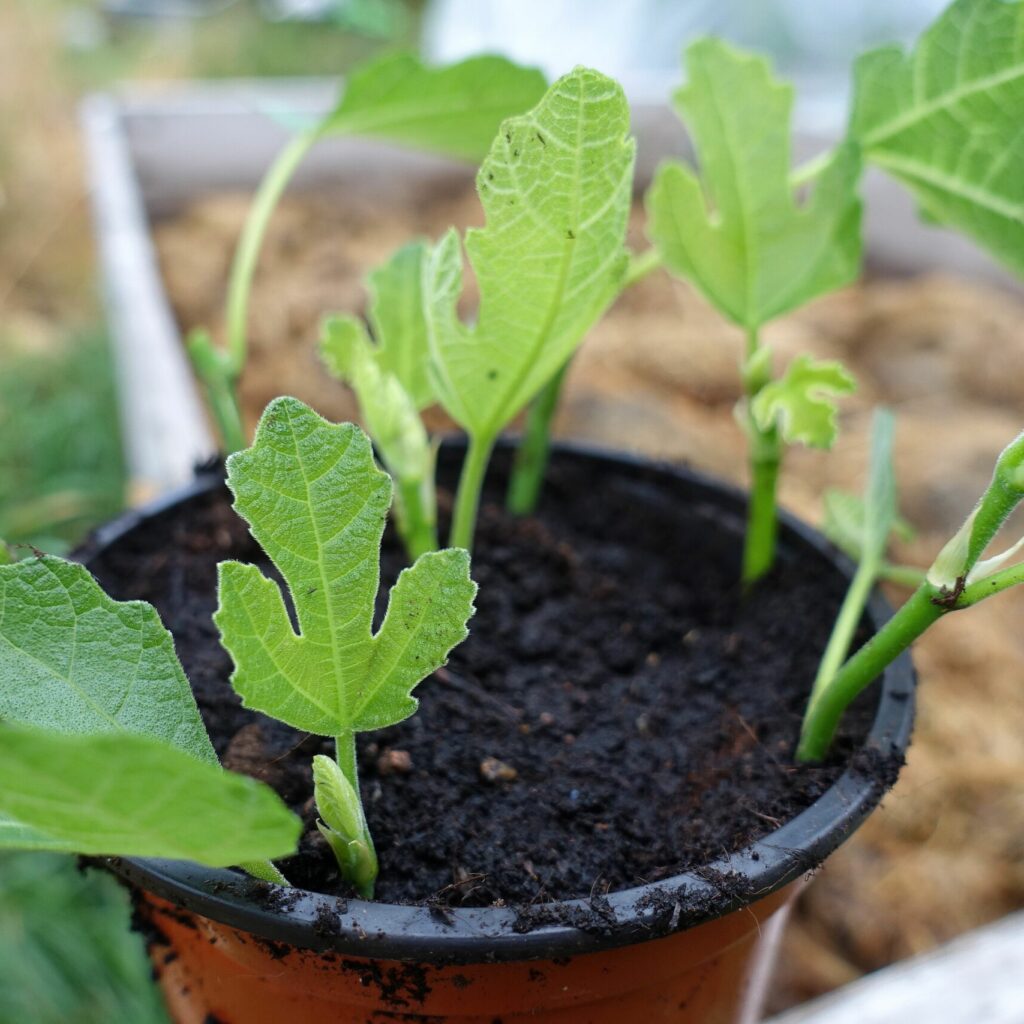
Why Grow Figs in Pots?
Growing figs in pots offers several benefits:
- Space-saving: Perfect for small gardens, patios, or balconies.
- Cold protection: Containers can be moved indoors or to sheltered spots during harsh winters.
- Controlled environment: Easier to manage soil, moisture, and sunlight conditions.
- Manageable size: Fig trees naturally respond well to container growth, staying compact while still producing plenty of fruit.
Whether you’re a beginner gardener or a seasoned plant lover, figs in pots are a rewarding and relatively low-maintenance choice.
Best Fig Varieties for Container Growing
Not all fig varieties perform well in pots, so it’s important to choose types that adapt to confined root spaces and produce reliably.
Here are some of the best fig varieties for container growing:
Brown Turkey
- Hardy, adaptable, and produces a large crop of sweet, reddish-brown figs.
- Tolerates cooler climates.
Celeste
- Compact growth, small to medium sweet fruits.
- Excellent for small pots and patios.
Petite Negra
- Dwarf variety that grows just 2-3 feet tall.
- Bears fruit while still young and small.
Black Mission
- Popular for its rich, sweet, dark purple fruits.
- Prefers warmer climates but can be overwintered indoors.
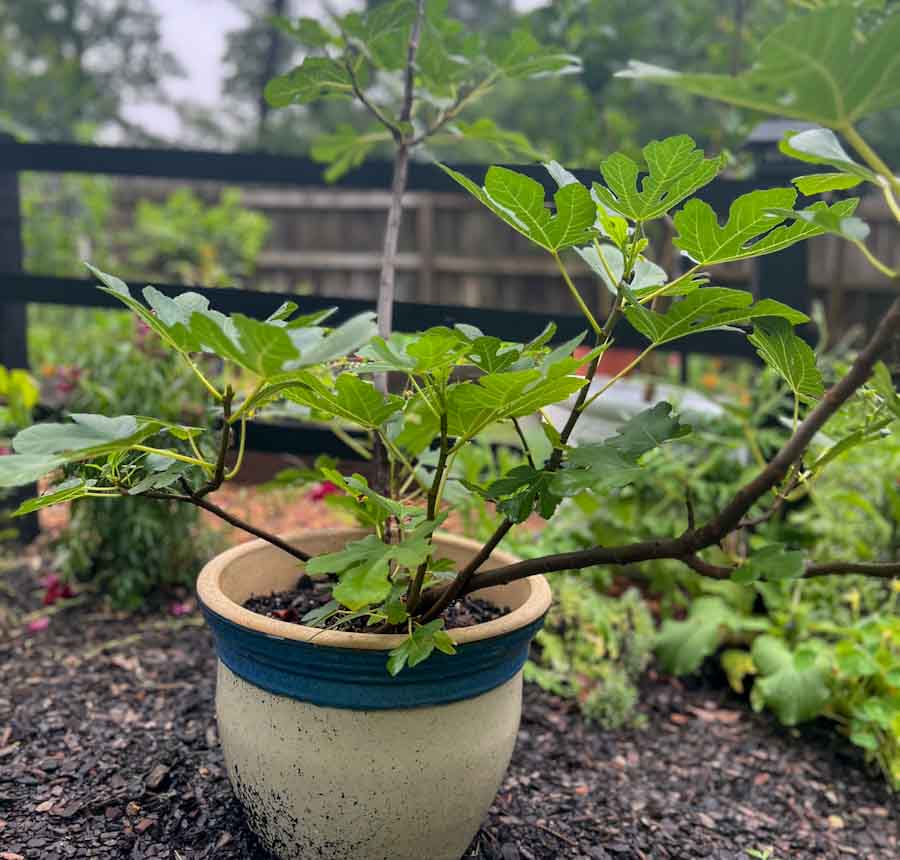
Ideal Growing Conditions for Figs in Pots
Sunlight
Figs love warmth and sunshine. Choose a spot that receives at least 6-8 hours of direct sunlight daily.
Soil
Use a well-draining, fertile potting mix. A mix designed for citrus or fruit trees works well. You can also create your own by combining:
- 60% high-quality potting soil
- 20% perlite or coarse sand
- 20% compost
The soil pH should be neutral to slightly acidic, around 6.0 to 6.5.
Watering
Figs in pots dry out faster than those in the ground. Keep the soil consistently moist, especially in hot, dry weather — but avoid waterlogging. Let the top inch of soil dry out between waterings.
Choosing the Right Container
The pot you select plays a big role in your fig’s health and productivity.
Size
Start with a container that’s at least 16-20 inches wide and deep. As your tree grows, you can repot it every 2-3 years into a slightly larger container.
Material
- Terracotta or ceramic pots: Beautiful but may dry out faster.
- Plastic or resin containers: Lightweight and retain moisture longer.
- Wooden barrels or half-barrels: Rustic charm and good insulation.
Drainage is essential. Make sure your pot has several drainage holes to prevent root rot.
How to Plant Figs in Pots: Step-by-Step
When to Plant
The best time to plant fig trees in containers is early spring or early fall, when temperatures are mild.
Planting Guide
- Choose your pot with good drainage.
- Add a layer of gravel or broken pottery at the base to improve drainage.
- Fill halfway with your prepared potting mix.
- Remove the fig tree from its nursery pot, gently loosening the roots.
- Position the tree in the center of the new pot, keeping the top of the root ball level with the soil surface.
- Fill around the roots with soil, pressing gently to eliminate air pockets.
- Water thoroughly until water runs out of the drainage holes.
- Add a 1-2 inch layer of mulch on top to help retain moisture and suppress weeds.
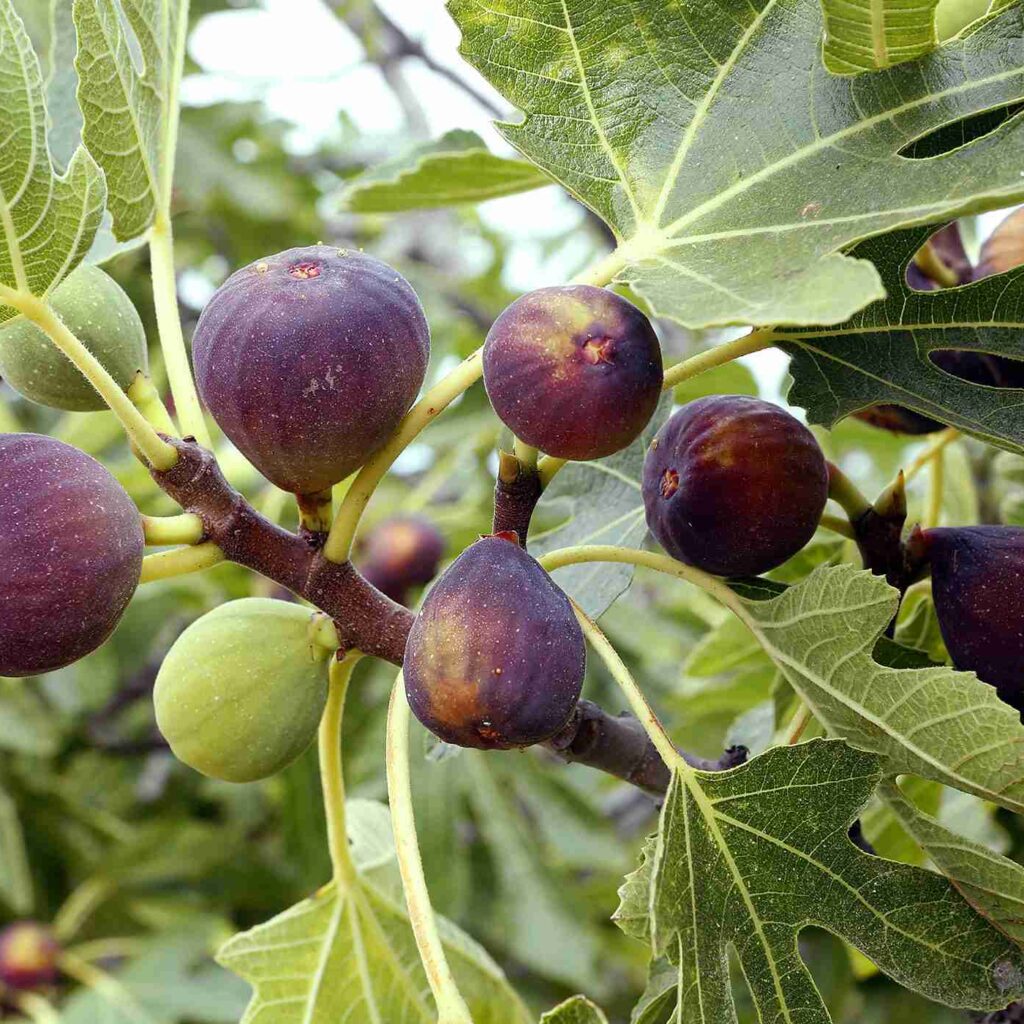
Caring for Figs in Pots
Once your fig tree is planted, it needs a little routine care to thrive:
Watering
During hot weather, container-grown figs may need watering every day. Always check the soil before watering. Reduce frequency in fall and winter.
Feeding
Feed your fig tree with a balanced liquid fertilizer (such as 10-10-10) every 4 weeks during the growing season (spring to early summer). Stop feeding by late summer to allow the tree to prepare for dormancy.
Optional: Use a slow-release granular fertilizer in early spring.
Pruning
- In winter (when dormant), prune back weak or crossing branches to maintain an open, vase-shaped structure.
- Remove suckers (shoots from the base) regularly.
- Lightly trim the canopy to control size and encourage branching.
Repotting
Every 2-3 years, repot your fig tree in early spring:
- Gently remove from the old pot.
- Trim back 20% of the root ball.
- Replace with fresh potting mix.
- Move to a slightly larger container if needed.
How to Overwinter Potted Figs
Figs are frost-sensitive, especially in containers where roots are more exposed to cold. In regions with freezing winters:
- Move pots into a cool, frost-free place like a garage, basement, or greenhouse.
- Water sparingly (once a month) to prevent the roots from drying out.
- If left outdoors, wrap the pot in burlap or bubble wrap and mulch heavily around the base.
- Resume regular care in spring when new growth appears.
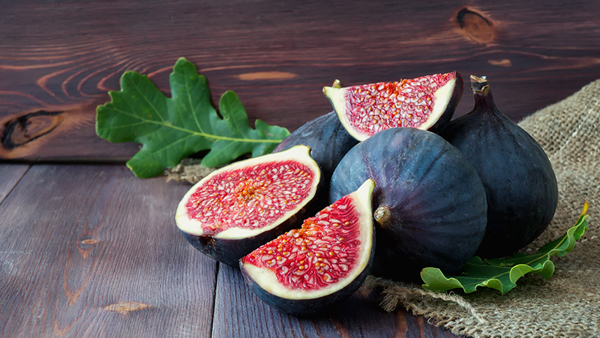
Harvesting Figs in Pots
Figs typically ripen in mid to late summer, though timing varies by variety and climate.
Signs your figs are ready:
- The fruit softens and droops at the neck.
- Skin color deepens.
- A drop of sugary liquid may appear at the base.
- They come off the branch with a gentle twist.
Tip: Harvest figs daily in peak season, as they spoil quickly once ripe.
Common Problems and How to Fix Them
Even in containers, fig trees can face a few issues:
Leaf drop: Usually from overwatering, underwatering, or sudden temperature changes.
Yellow leaves: Can indicate overwatering or nutrient deficiency.
Pests: Watch for aphids, spider mites, or scale. Use insecticidal soap or neem oil as needed.
Fruit splitting: Caused by irregular watering. Keep soil moisture consistent.
Final Thoughts: Bring the Mediterranean Home
Growing figs in pots is a fantastic way to enjoy fresh, homegrown fruit no matter your garden size or climate. With their rich, ancient history and delightful flavor, fig trees bring a touch of the Mediterranean to your home.
Whether on a balcony in the city or a sunny backyard patio, a potted fig tree offers beauty, shade, and delicious harvests for years to come.

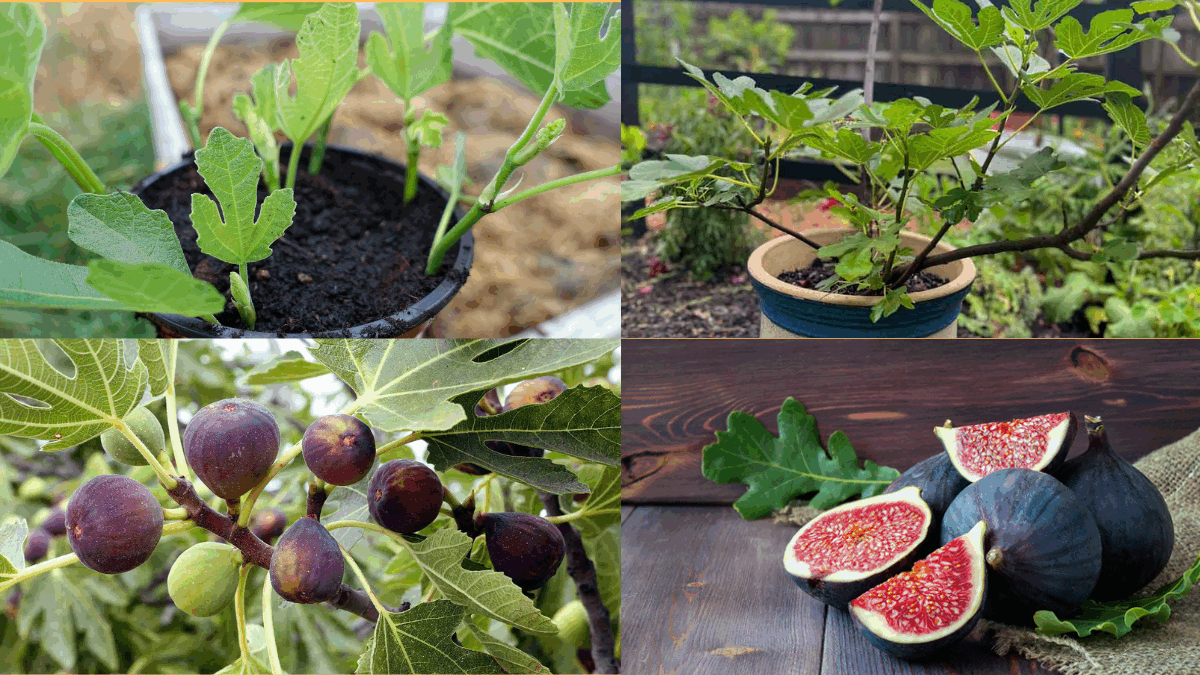
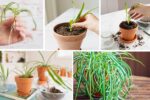


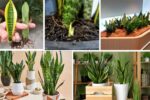
Leave A Comment